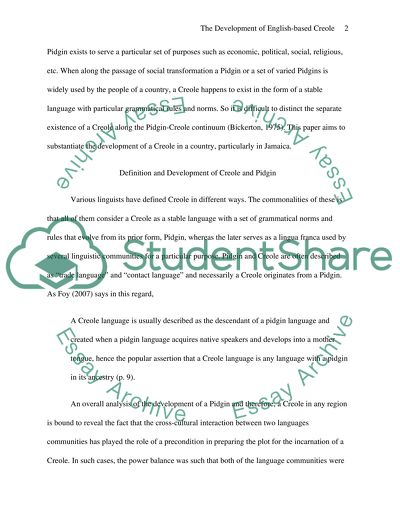Cite this document
(The Development of English-based Creole in Jamaica Case Study, n.d.)
The Development of English-based Creole in Jamaica Case Study. Retrieved from https://studentshare.org/history/1555079-explain-whyand-howan-english-based-creole-is-being-promoted-in-any-one-country
The Development of English-based Creole in Jamaica Case Study. Retrieved from https://studentshare.org/history/1555079-explain-whyand-howan-english-based-creole-is-being-promoted-in-any-one-country
(The Development of English-Based Creole in Jamaica Case Study)
The Development of English-Based Creole in Jamaica Case Study. https://studentshare.org/history/1555079-explain-whyand-howan-english-based-creole-is-being-promoted-in-any-one-country.
The Development of English-Based Creole in Jamaica Case Study. https://studentshare.org/history/1555079-explain-whyand-howan-english-based-creole-is-being-promoted-in-any-one-country.
“The Development of English-Based Creole in Jamaica Case Study”. https://studentshare.org/history/1555079-explain-whyand-howan-english-based-creole-is-being-promoted-in-any-one-country.


